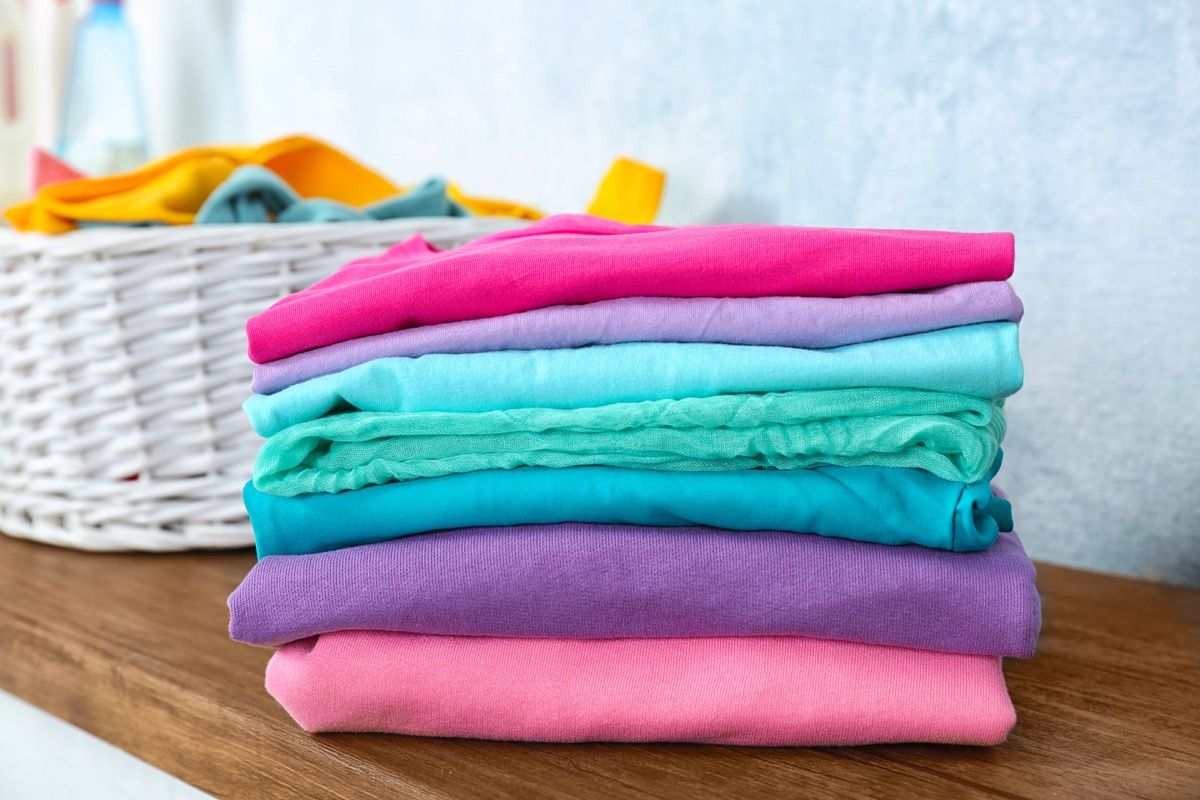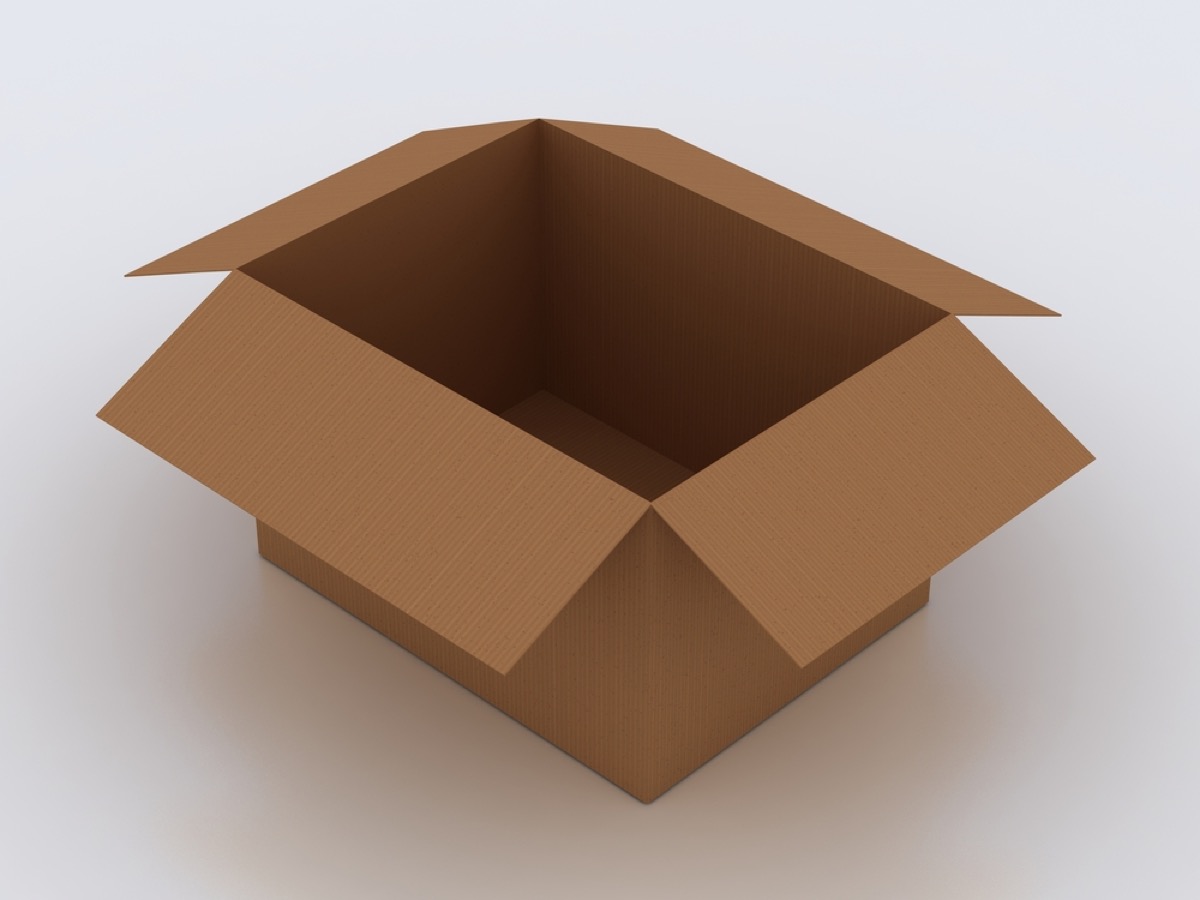The study, from Australia’s national science agency CSIRO, were published in the Virology Journal in October and the researchers found that the smoother surfaces of cell phone screens and banknotes allow COVID to live for longer. Of particular concern was how much stronger the virus was than flu, which only survived for 17 days under the same conditions. “Our results show that SARS-CoV-2 can remain infectious on surfaces for long periods of time, reinforcing the need for good practices such as regular handwashing and cleaning surfaces,” Debbie Eagles, MD, co-author of the study, said in a statement. “At 20 degrees Celsius, which is about room temperature, we found that the virus was extremely robust, surviving for 28 days on smooth surfaces such as glass found on mobile phone screens and plastic banknotes.” (For comparison, 20 degrees Celsius is equivalent to 68 degrees Fahrenheit.) While non-laboratory conditions would make it harder for the virus to survive this long (tests were conducted in the dark at the Australian Centre for Disease Preparedness, while UV light is known to kill COVID), it’s a stark reminder of the importance of cleaning your phone regularly and effectively and using contactless payment instead of cash whenever possible. Although the coronavirus is primarily spread by droplets released by an infected person, this new study also shows the need to be aware of what other surfaces the virus can live on, like the ones that follow here. And if you’re not sure what you’ve come down with, know that This One"Wacky" Symptom Means You Have COVID, Not the Flu. The CSIRO researchers also tested for the virus on cotton cloth and at 20 degrees Celsius, COVID lived on these items for 14 days. “The majority of virus reduction on cotton occurred very soon after application of virus, suggesting an immediate adsorption effect,” the researchers note. At 40 degrees Celsius (or 104 Fahrenheit), the virus wasn’t detected on cotton past 24 hours, so wash that laundry on hot! For more tips like this regarding the virus, this is The Worst Thing You’re Doing With Your Laundry Right Now, CDC Says. Studies seem to suggest that cardboard is one of the safer materials where COVID is concerned. “The virus typically doesn’t like to live on surfaces that have a lot of holes or microscopic little grooves, nooks or crannies,” infectious disease specialist, Frank Esper, MD, told the Cleveland Clinic. “It likes surfaces that are very smooth, like door knobs,” he added, echoing the findings of the Australian researchers. Research published in the New England Journal of Medicine in April also suggests that the virus could survive for just 24 hours on cardboard under normal circumstances. “As you can imagine cardboard has little microscopic holes in it, so the virus doesn’t like it very much,” Esper explained. And for more up-to-date information on the pandemic, sign up for our daily newsletter. Laboratory tests published in the medical journal The Lancet in April found that the coronavirus could survive for up to six days on plastic surfaces (around the same amount of time as stainless steel)—which was much longer than the tissue paper and treated wood studied. “SARS-CoV-2 was more stable on smooth surfaces,” the authors of the Lancet study also found. And for more key tips on keeping the virus at bay, here are 50 Essential COVID Safety Tips the CDC Wants You to Know. Researchers in Japan recently studied how long the virus could live on human skin. Ethical safeguards meant that scientists couldn’t test live human subjects themselves, so they used a skin model, with material collected from autopsies. Their findings, published in the journal Clinical Infectious Diseases in October, found that the coronavirus survived for 9.04 hours on the skin, compared with 1.82 hours for the influenza A virus.ae0fcc31ae342fd3a1346ebb1f342fcb However, the good news is that both viruses were rendered inactive on skin after using an 80-percent ethanol hand sanitizer. “Appropriate hand hygiene … leads to the quick viral inactivation [of SARS-CoV-2] and may reduce the high risk of contact infections,” the authors noted. And for more on making sure your hands are clean, know that You Haven’t Been Rubbing in Your Hand Sanitizer Correctly, CDC Says.



